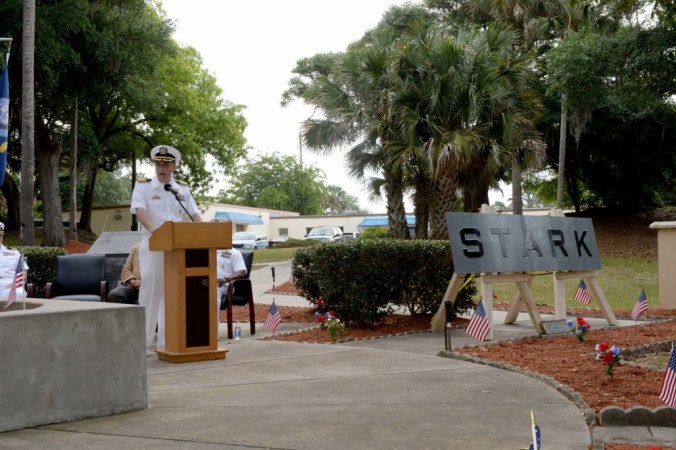In order to meet the goal of a Navy numbering 355 ships, Naval Sea Systems Command will consider resurrecting a number of retired combat vessels from the dead and refitting them for active service.
Though nothing has been set in stone just yet, some of the “younger” ships parked at the various Naval Inactive Ship Maintenance Facilities around the country could get a new lease on life, thanks to dialed-down purchases of Littoral Combat Ships and the next-generation Zumwalt class destroyer.
Upon decommissioning, warships are often stripped for reusable parts, and sensitive equipment and gear are removed, along with the ship’s weapon systems. Frigates, destroyers and cruisers could lose their deck guns, their radars, and electronics suites — some of which will be used as spare parts for active ships, and the rest of which will be stored until the Navy determines that it has absolutely no use for these retired vessels anymore, heralding the start of the process of their dismantling.

A number of ships will also be sold to allied nations for parts or for active use.
Currently, the Navy retains less than 50 ships within its inactive “ghost” fleet, among them Oliver Hazard-Perry frigates, Ticonderoga guided missile cruisers, Kitty Hawk-class aircraft carriers, and a variety of other types, including fleet replenishment ships and amphibious assault ships.
Among the ships to be evaluated for a potential return to service are a handful of Oliver Hazard-Perry class frigates and the USS Kitty Hawk, a conventionally-powered super carrier mothballed in Bremerton, Washington.
The Kitty Hawk, now over 57 years old, is apparently the only carrier in the Navy’s inactive fleet worthy of consideration for a return to duty. Having been retired in 2009, the Kitty Hawk was modernized enough to support and field all Navy carrier-borne aircraft currently active today.
However, the ship has since been heavily stripped down; many of her combat systems destroyed or sent around the Navy for use with other vessels. The extensive refurbishment this 63,000 ton behemoth would have to undergo would likely prove to be the limiting factor in bringing it back to duty.
This wouldn’t be the first time the Navy has explored the possibility of returning mothballed ships to active duty. In fact, in the 1980s as part of then-President Reagan’s 600 Ship initiative, the Navy recommissioned the legendary WWII-era Iowa class battleships, three of which had been inactive since the late ’50s and one of which had been retired in the late ’60s. All four vessels underwent a costly multi-million dollar overhaul and were ushered back into service.

Two of these battleships — the Wisconsin and the Missouri — would go on to see action during the Persian Gulf War before being quickly retired in 1990 along with their sister ships, the Iowa and the New Jersey.
Bringing back the Hazard-Perry frigates could be far more of a distinct possibility than any of the other ships in the inactive fleet. With the Navy reducing its planned buy of LCS vessels, originally designed to be the successor to the Hazard-Perry boats, and constant engineering issues plaguing the active LCS fleet, a gap has gradually emerged with many clamoring for a more effective frigate-type vessel… or a return to the ships which were previously to be replaced.
A number of Hazard-Perry ships have indeed been sold for scrap, or have been earmarked for a transfer to allied nations, though a few still remain in the inactive reserve, ready to be revamped and returned to service should the need arise.
Ultimately, it will be the bean counters who determine the final fate of the ships in the ghost fleet, and whether or not un-retiring them is a viable option. The cost of refitting and overhauling these vessels to be able to stay relevant against more modern threats, including boat swarms, could prove to be too much for the Navy to foot, especially for a short term investment.
Further options could include hastening the construction of current combat vessels on-order, while retaining more of the older ships in the fleet for an extended service term. However, given the Navy’s needs at the moment, it’s safe to say that NAVSEA will give returning some of these old veterans back to duty serious consideration.


























